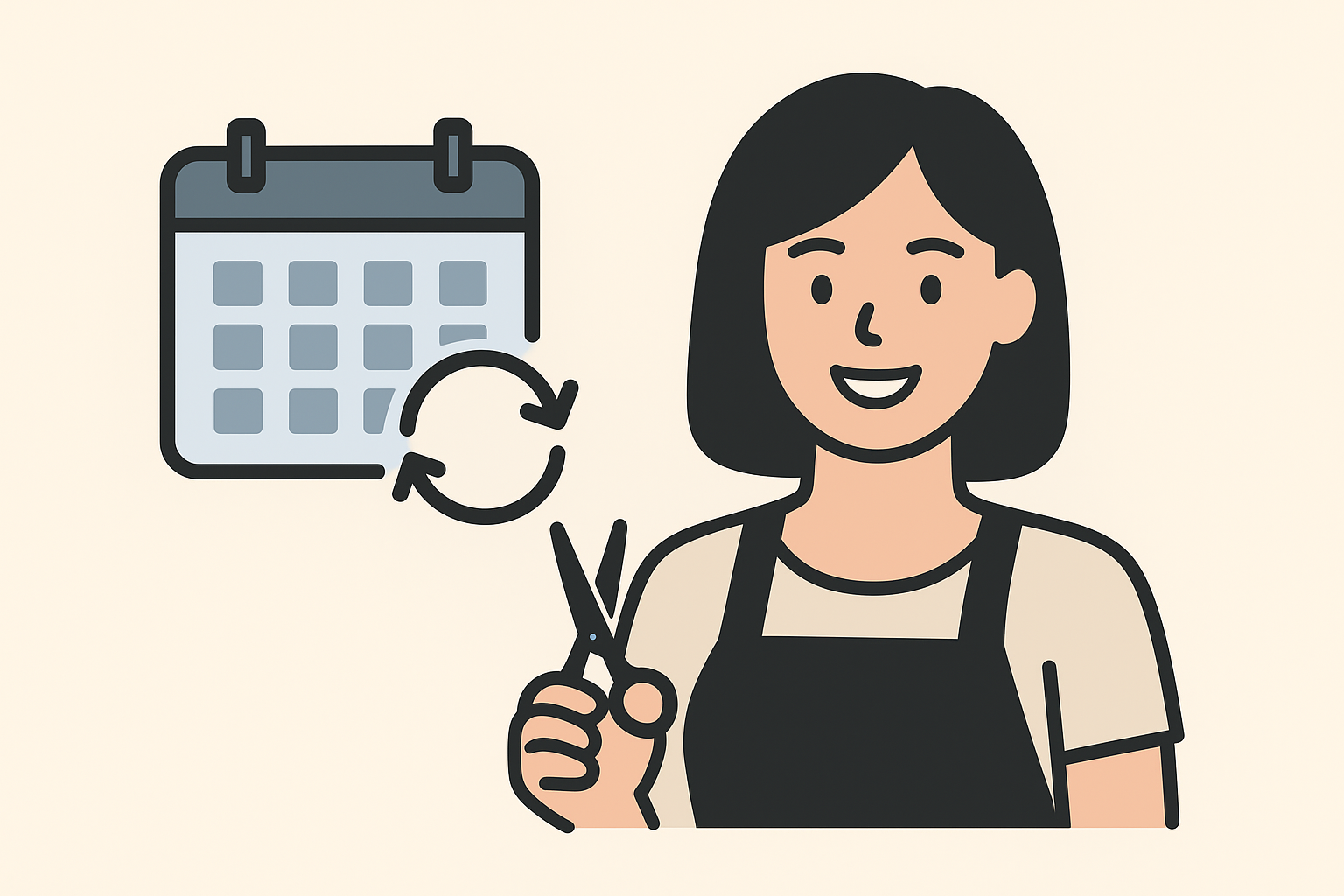Repeat bookings aren’t just about numbers on the schedule; they are the backbone of a sustainable salon. A loyal client base means:
- Financial stability: Clients coming back regularly creates predictable revenue streams.
- Stylist security: A fuller column gives team members confidence that their income is consistent.
- Business growth: It costs less to retain a client than to attract a new one, freeing up marketing spend.
- Reputation: Loyal clients are more likely to refer friends and leave positive reviews.
Framing this positively to your team helps them see that rebooking benefits them personally—not just the business.
Understanding the Client Journey
If repeat bookings are low, it may be because something in the client journey is missing. Break it down with your team:
- Before the Service
- Was the greeting warm and genuine?
- Did the client feel seen and welcomed?
- During the Service
- Was the consultation thorough?
- Did the stylist actively listen to the client’s lifestyle, preferences, and challenges?
- Was the service delivered with care, attention to detail, and professionalism?
- After the Service
- Did the stylist educate the client on how to maintain their look at home?
- Did they recommend when the client should realistically come back (not just “see you next time”)?
- Was there an invitation to rebook before leaving?
Clients are more likely to rebook when they feel their stylist is invested in their personal look and long-term hair health.
Building the Habit of Rebooking
Rebooking is often avoided because stylists feel awkward “selling” the next appointment. The key is to shift their mindset: rebooking is serving the client’s best interest, not sales.
Examples they can use:
- “Your balayage will grow out softly, but in about 8 weeks it will lose brightness—let’s get you back before that happens.”
- “This style will hold best if we maintain it every 5 weeks. Would you like me to secure your usual day and time?”
- “You’ve got a wedding in three months—you’ll want fresh colour the week before. Let’s book that in so you’re not rushing.”
The stylist should make rebooking feel like a natural extension of client care, not an upsell.
Team Motivation & Accountability
It’s important your team sees progress and feels rewarded:
- Set a Salon Goal: For example, move the rebooking rate from 30% to 50% over 3 months.
- Measure & Share Results: Use the salon software to track rebooking’s and show weekly improvements.
- Celebrate Wins: Shout out the stylist who increased their rebooking’s most that week. Recognition builds momentum.
- Create Friendly Competition: A light-hearted leaderboard or monthly reward (coffee voucher, product bundle, team lunch) can motivate.
Training Activities for Your Team
You can bring energy to this topic with interactive exercises:
- Role Play Rebooking Conversations
Pair team members and have them practice asking clients to rebook in different scenarios. Rotate partners so everyone feels comfortable.
- Client Journey Workshop
Have the team list every touchpoint a client experiences. Then brainstorm small improvements at each step that would make a client feel so valued they naturally want to return.
- Product & Service Confidence Boost
Run mini knowledge sessions on colour care, scalp treatments, or styling. When stylists feel confident, they are better at recommending follow-ups.
- Mystery Shopper Feedback
Occasionally ask a friend or loyal client to experience the salon and provide honest feedback on whether they were invited to rebook. Share results (anonymously) with the team.
Creating a Culture of Loyalty
Sustainable improvement comes when rebooking becomes a natural part of salon culture:
- Build it into consultations: “Here’s today’s plan, and then in 6 weeks we’ll…”
- Normalize it at checkout: every client should always be offered a chance to rebook before leaving.
- Model it yourself: if the owner or manager demonstrates this habit consistently, the team will follow.
Over time, this creates a culture where rebooking isn’t seen as optional—it’s simply part of the professional service your salon provides.
By addressing this as a team growth opportunity, not a criticism, you’ll build motivation and shared accountability. Clients will feel better cared for, stylists will see fuller books, and the salon will thrive.
